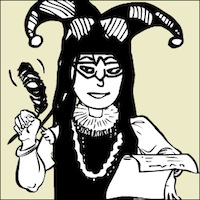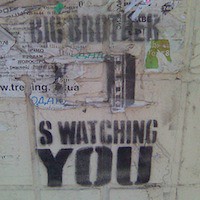Prohibition (January 16, 1919-December 5, 1933)

In today’s society, alcohol indicates good times are to be had. We are inundated by clever ads on television for different beers and hard liquors and, in some places, we can simply go to the grocery store and grab a bottle of wine without fear of arrest. In today’s America, many of the freedoms we have, we seemingly take for granted.
Almost 100 years ago, the manufacturing, selling, or transportation (import/export) of alcohol was illegal. That meant you couldn’t just walk into a liquor store and buy a jug of rum. You couldn’t set up a distillery in your basement and make whiskey. You certainly couldn’t make whiskey and then sell it to your friends. No alcoholic beverages allowed within the United States. January 16, 1919, the U.S. Congress agreed that this was a brilliant idea and ratified the 18th Amendment to the Constitution.
The Constitution of the United States, considered a “living document,” established the laws and powers of our country. The first ten amendments to the Constitution are called the Bill of Rights. The Constitution itself delineates the methods by which an amendment can be added. Those ways are either by Congressional proposal or by State proposal. The Constitution currently has 27 amendments, including the Bill of Rights. Of the 17 added since 1791 (when the Bill of Rights were added to the Constitution), none of them have been proposed by the States.
Section one of the 18th Amendment states, “After one year from the ratification of this article the manufacture, sale, or transportation of intoxicating liquors within, the importation thereof into, or the exportation thereof from the United States and all territory subject to the jurisdiction thereof for beverage purposes is hereby prohibited.” Section 2 of the amendment stated that Congress and the States had the power to enforce the law and section 3 merely stated the terms by which the amendment would become null (after 7 years, if no vote). No where within the amendment was the punishment stated for the infringement thereof.
At first, Prohibition worked. It did lower the rate of alcohol consumption by roughly 30%. The price of illegal alcohol went up and the factory workers simply could not afford to drink. Where there is a will, however, there is a way. By 1925, New York City had anywhere from 30,000 to 100,000 speakeasies. Neither the Federal Government nor the local governments had the energy or resources to deal with the influx of speakeasies and bootleggers. “The Roarin’ 20’s” saw a rise in organized crime and a blatant disrespect for the police.
By 1933, Congress realized they had lost control of what they once sought to undermine—alcoholism. There was simply no way for them to guard every port, every city street, every backyard and make sure people were living the way Congress felt they should. Finally, on December 5, 1933, Congress signed into effect the 21st Amendment which repealed Prohibition. Unfortunately, the damage to America’s psyche had already been done. Al Capone and others like him ran the streets of the big cities. Politicians were on the Mafia’s payroll, as were some of the police officers. To date, the 18th Amendment is the only one to ever be repealed.
Almost 100 years ago, the manufacturing, selling, or transportation (import/export) of alcohol was illegal. That meant you couldn’t just walk into a liquor store and buy a jug of rum. You couldn’t set up a distillery in your basement and make whiskey. You certainly couldn’t make whiskey and then sell it to your friends. No alcoholic beverages allowed within the United States. January 16, 1919, the U.S. Congress agreed that this was a brilliant idea and ratified the 18th Amendment to the Constitution.
The Constitution of the United States, considered a “living document,” established the laws and powers of our country. The first ten amendments to the Constitution are called the Bill of Rights. The Constitution itself delineates the methods by which an amendment can be added. Those ways are either by Congressional proposal or by State proposal. The Constitution currently has 27 amendments, including the Bill of Rights. Of the 17 added since 1791 (when the Bill of Rights were added to the Constitution), none of them have been proposed by the States.
Section one of the 18th Amendment states, “After one year from the ratification of this article the manufacture, sale, or transportation of intoxicating liquors within, the importation thereof into, or the exportation thereof from the United States and all territory subject to the jurisdiction thereof for beverage purposes is hereby prohibited.” Section 2 of the amendment stated that Congress and the States had the power to enforce the law and section 3 merely stated the terms by which the amendment would become null (after 7 years, if no vote). No where within the amendment was the punishment stated for the infringement thereof.
At first, Prohibition worked. It did lower the rate of alcohol consumption by roughly 30%. The price of illegal alcohol went up and the factory workers simply could not afford to drink. Where there is a will, however, there is a way. By 1925, New York City had anywhere from 30,000 to 100,000 speakeasies. Neither the Federal Government nor the local governments had the energy or resources to deal with the influx of speakeasies and bootleggers. “The Roarin’ 20’s” saw a rise in organized crime and a blatant disrespect for the police.
By 1933, Congress realized they had lost control of what they once sought to undermine—alcoholism. There was simply no way for them to guard every port, every city street, every backyard and make sure people were living the way Congress felt they should. Finally, on December 5, 1933, Congress signed into effect the 21st Amendment which repealed Prohibition. Unfortunately, the damage to America’s psyche had already been done. Al Capone and others like him ran the streets of the big cities. Politicians were on the Mafia’s payroll, as were some of the police officers. To date, the 18th Amendment is the only one to ever be repealed.

Related Articles
Editor's Picks Articles
Top Ten Articles
Previous Features
Site Map
Content copyright © 2023 by Christa Mackey. All rights reserved.
This content was written by Christa Mackey. If you wish to use this content in any manner, you need written permission. Contact Lane Graciano for details.







